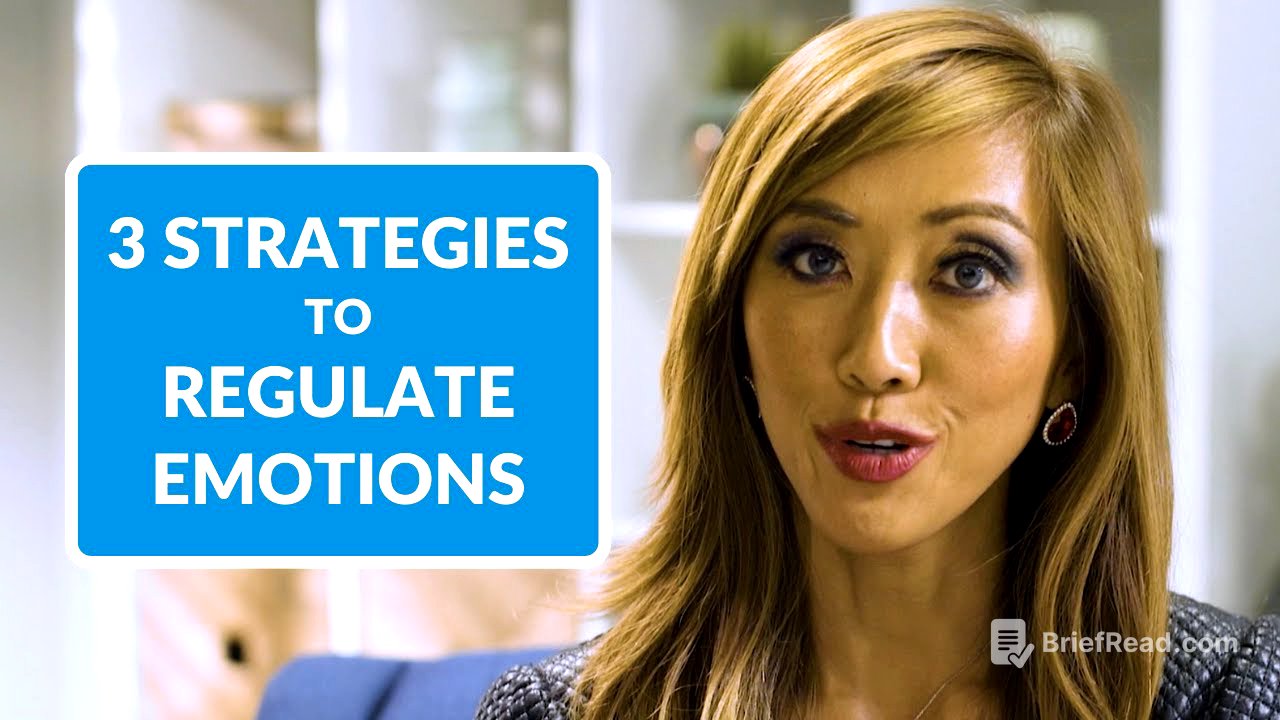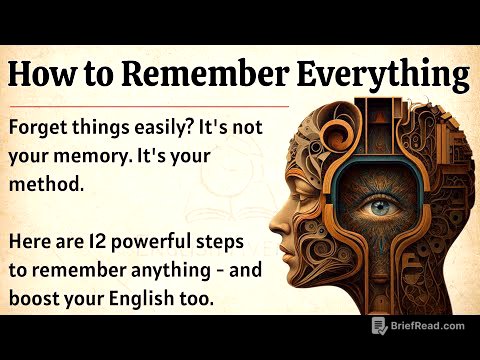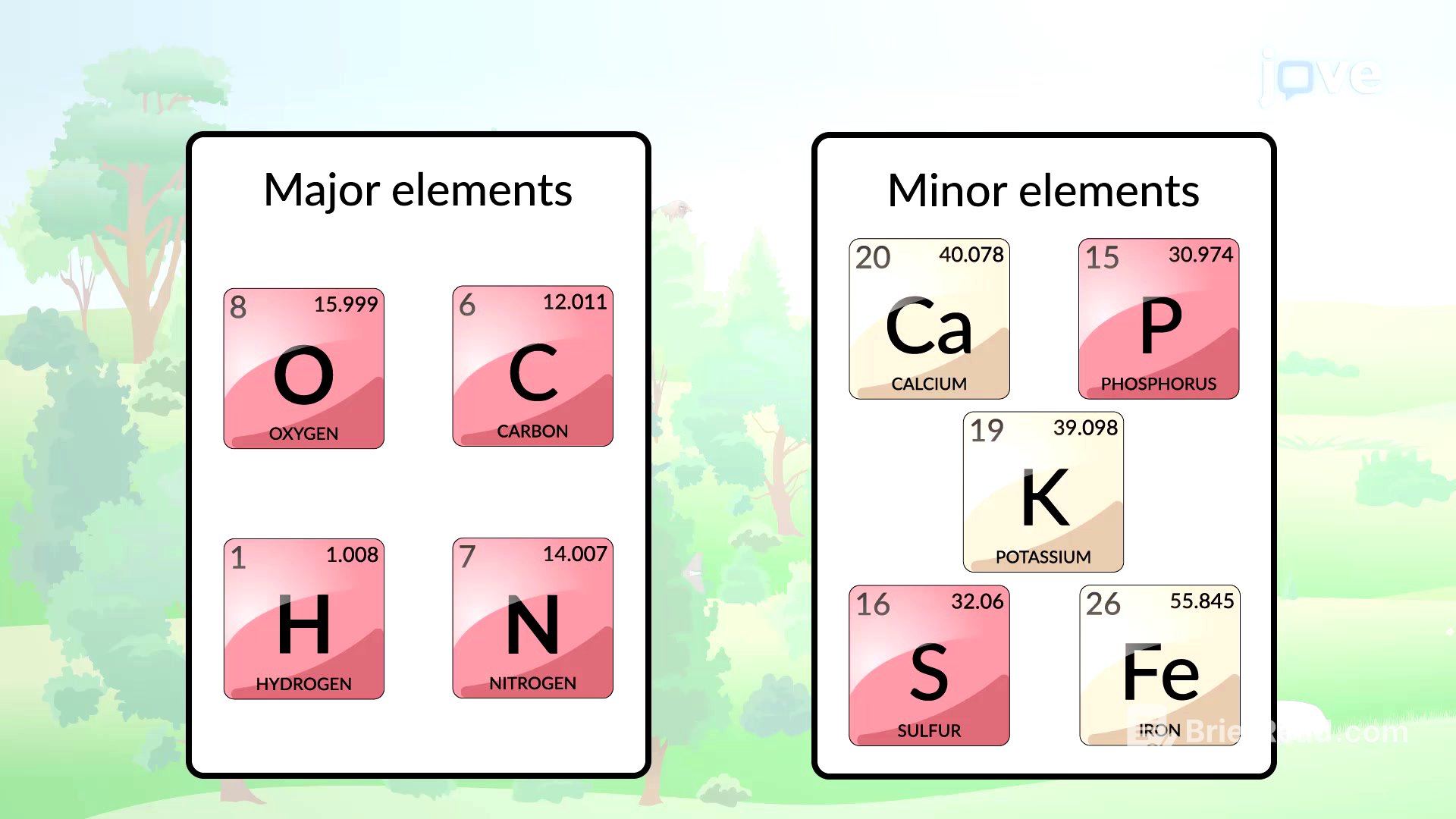TLDR;
This video discusses the three primary goals of emotion regulation: understanding emotions, reducing vulnerability to emotional decision-making, and decreasing emotional suffering. It emphasizes the importance of recognizing and accepting emotions, using emotion words to describe experiences, and understanding the biological basis of emotions. Additionally, it covers practical techniques such as mindfulness and acting in opposite action to manage and reduce negative emotions.
- Understanding emotions involves recognizing their function in communication, motivation, and intuition.
- Reducing vulnerability to emotional decision-making includes making good lifestyle choices like sleep, diet, and exercise.
- Decreasing emotional suffering can be achieved through mindfulness and acting in opposite action to change emotional states.
Introduction to Emotion Regulation [0:08]
The discussion begins by highlighting the importance of understanding emotions. Emotions serve several critical functions: they aid in communication, motivate actions, and provide intuitive insights. These insights can signal whether a situation feels right or wrong, guiding our responses. Emotions are adaptive and essential for survival, as exemplified by the emotion of fear, which triggers fight or flight responses in dangerous situations.
Three Goals of Emotion Regulation [0:18]
The first goal of emotion regulation is understanding and connecting with one's emotions. The second goal involves reducing vulnerability to emotional decision-making, particularly when experiencing negative emotions. This can be achieved through healthy lifestyle choices such as adequate sleep, a balanced diet, regular exercise, and self-care practices. These habits help in reducing the influence of "emotion mind." The final goal is to decrease emotional suffering by using techniques like mindfulness to manage negative emotions. Another effective strategy is "acting in opposite action," which involves behaving in a way that counters the emotion being felt, such as engaging in activities when feeling sad.
The Role of Action in Emotion [2:28]
Acting in a certain way can influence our emotions. For example, forcing oneself to get dressed nicely or go outside can improve one's mood, even when feeling depressed. This bidirectional relationship between behavior and emotion suggests that changing one's actions can lead to a shift in emotional state.
Understanding and Describing Emotions [3:24]
The first step in emotion regulation is understanding emotions and using emotion words to describe experiences. Some individuals may engage in denial by ignoring their emotions and describing their suffering in physical terms, such as headaches or stomach aches, rather than using emotion words like "sad," "angry," or "scared." Emotion regulation involves learning and using emotion words to articulate one's feelings.
Alexithymia and Emotional Vocabulary [4:22]
Many patients experience alexithymia, which is the inability to describe experiences using emotion words. This can hinder progress in therapy because it limits insight and can perpetuate denial. Developing an emotional vocabulary is crucial for these individuals. Accepting that emotions are a fundamental and biological aspect of being human is also important.
The Biological Basis of Emotions [5:57]
Emotions are inevitable, biological, and a part of every person. Integrating biology and medicine into the understanding of emotions can remove judgment. Sadness, for example, communicates an unmet need, prompting individuals to identify and address that need.







![[Digimon Podcast] LiT Episode 83 - I choo, choo, choose you](https://wm-img.halpindev.com/p-briefread_c-10_b-10/urlb/aHR0cDovL2ltZy55b3V0dWJlLmNvbS92aS91WE52RXpJc3JfQS9ocWRlZmF1bHQuanBn.jpg)

